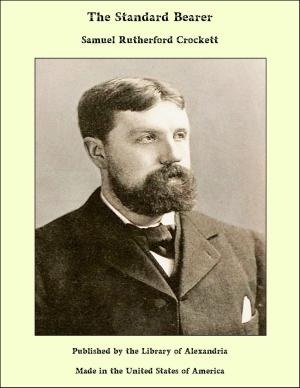| Author: | Various Authors | ISBN: | 9781465629845 |
| Publisher: | Library of Alexandria | Publication: | March 8, 2015 |
| Imprint: | Language: | English |
| Author: | Various Authors |
| ISBN: | 9781465629845 |
| Publisher: | Library of Alexandria |
| Publication: | March 8, 2015 |
| Imprint: | |
| Language: | English |
“The old ethnology, like every science in its beginnings, was speculative. The new ethnology is inductive. Fifty or sixty years ago the attempt was first made to read the riddle of human origins and substantiate the answer by facts. One student after another—Spencer, Tylor, Morgan, and others—thought out a formula that seemed a reasonable explanation of how some activity of human civilization—institutional, religious, or inventive—began, developed, and reached its present condition; and then ransacked the accounts of travelers, missionaries, and residents among primitive tribes for each bit of evidence favorable to his theory. Thus the origin of marriage was plausibly traced back to the matriarchate and ultimate promiscuity, of society to totemic clans, of the historic religions to a belief in souls and ghosts, of pottery to clay-lined basketry. Twenty-five years ago this theory fabrication was in full swing; and in many non-scientific quarters it still enjoys vogue and prestige. It is plain that the method of these evolutionary explanations was deductive. One started with an intuition, a rationalization, a guess, then looked for corroborative facts. Inevitably, all contrary facts tended to be ignored or explained away. What was more, the evidence being adduced solely with reference to whether it fitted or failed to fit into the theory under examination, it was torn from its natural relations of time, space, and association. This was very much as if a selection of statements, made by an individual on a given topic, were strung together, without reference to the circumstances under which he uttered them and without the qualifications which he attached. By the use of this method of ignoring context, a pretty good case might be made out to show that the Kaiser was really a pacificist republican at heart, Huxley a devout if not quite regular Christian, and Anthony Comstock a tolerant personality. Roosevelt could be portrayed as either a daring radical or as a hide-bound reactionary. Just such contrary interpretations did emerge in the older ethnology. Totems, for instance, were held by one “authority” to have had their origin in magical rites concerned with food supply, by another in a sort of nicknames, by a third in a primitive, mystic adumbration of the concept of society itself. Gradually it began to be recognized by students that this method might be necessary in the law-courts, where each party advowedly contends for his own interests, but that in science it led to exciting wrangling rather more than to progress toward impartial truth. And so a new ethnology modestly grew up which held for its motto: “All possible facts first, then such inferences as are warranted.” “All facts” means not only all items but also these items in their natural order: the sequence in which they occur, their geographical relation, the degree to which they are associated. The anthropologist no longer compares marriage customs from all over the world as they come to hand. He realizes that marriage is likely to be a different rite as it is practiced respectively among peoples, with and without civil government, or among nations that have come under the influence of a world religion or remain in a status of tribal ceremony. The whole culture of the group must be more or less known before the history and meaning of an institution can become intelligible. Detached from its culture mass, a custom reveals as little of its functioning as an organ dissected out of the living body. Equally important for the interpretation of ethnic facts, are their geographical associations, their distribution. Is a custom or invention peculiar to one people or is it shared by many distinct peoples occupying a continuous area? Such a question may seem trivial.
“The old ethnology, like every science in its beginnings, was speculative. The new ethnology is inductive. Fifty or sixty years ago the attempt was first made to read the riddle of human origins and substantiate the answer by facts. One student after another—Spencer, Tylor, Morgan, and others—thought out a formula that seemed a reasonable explanation of how some activity of human civilization—institutional, religious, or inventive—began, developed, and reached its present condition; and then ransacked the accounts of travelers, missionaries, and residents among primitive tribes for each bit of evidence favorable to his theory. Thus the origin of marriage was plausibly traced back to the matriarchate and ultimate promiscuity, of society to totemic clans, of the historic religions to a belief in souls and ghosts, of pottery to clay-lined basketry. Twenty-five years ago this theory fabrication was in full swing; and in many non-scientific quarters it still enjoys vogue and prestige. It is plain that the method of these evolutionary explanations was deductive. One started with an intuition, a rationalization, a guess, then looked for corroborative facts. Inevitably, all contrary facts tended to be ignored or explained away. What was more, the evidence being adduced solely with reference to whether it fitted or failed to fit into the theory under examination, it was torn from its natural relations of time, space, and association. This was very much as if a selection of statements, made by an individual on a given topic, were strung together, without reference to the circumstances under which he uttered them and without the qualifications which he attached. By the use of this method of ignoring context, a pretty good case might be made out to show that the Kaiser was really a pacificist republican at heart, Huxley a devout if not quite regular Christian, and Anthony Comstock a tolerant personality. Roosevelt could be portrayed as either a daring radical or as a hide-bound reactionary. Just such contrary interpretations did emerge in the older ethnology. Totems, for instance, were held by one “authority” to have had their origin in magical rites concerned with food supply, by another in a sort of nicknames, by a third in a primitive, mystic adumbration of the concept of society itself. Gradually it began to be recognized by students that this method might be necessary in the law-courts, where each party advowedly contends for his own interests, but that in science it led to exciting wrangling rather more than to progress toward impartial truth. And so a new ethnology modestly grew up which held for its motto: “All possible facts first, then such inferences as are warranted.” “All facts” means not only all items but also these items in their natural order: the sequence in which they occur, their geographical relation, the degree to which they are associated. The anthropologist no longer compares marriage customs from all over the world as they come to hand. He realizes that marriage is likely to be a different rite as it is practiced respectively among peoples, with and without civil government, or among nations that have come under the influence of a world religion or remain in a status of tribal ceremony. The whole culture of the group must be more or less known before the history and meaning of an institution can become intelligible. Detached from its culture mass, a custom reveals as little of its functioning as an organ dissected out of the living body. Equally important for the interpretation of ethnic facts, are their geographical associations, their distribution. Is a custom or invention peculiar to one people or is it shared by many distinct peoples occupying a continuous area? Such a question may seem trivial.















